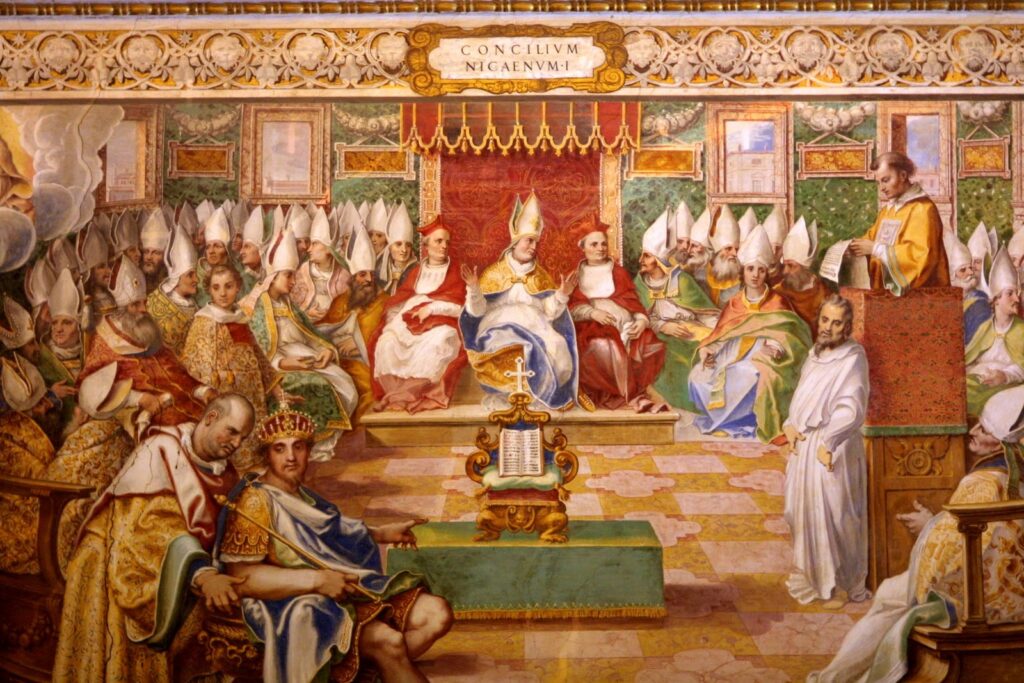Sheol and Hades
I have written a post detailing the history of Sheol—its etymology, origin, etc. in the first series for this website called “The History of Hell.” If you want more information about the history of both Sheol and Hades, you can find more about it HERE (for Sheol) and HERE (for Hades). This post, however, will just focus on the usage of the word Sheol and how/why it was translated as “hell,” along with its NT counterpart of “Hades.”
According to some KJV only believers, the OT frequently taught about the doctrine of hell because it is mentioned 31 times throughout the King James Version of the Hebrew Bible. This was the majority viewpoint for hundreds of years in English-speaking societies because the KJV was the only version available to the believer, save for a few smaller early-English versions like Tyndale and Wycliff. With the growth of the KJV popularity, hell took on a life of its own and was believed to be “a clear and plain” teaching of the Bible. However, what many English-speaking Christians at the time did not know was that every time the word “hell” appeared in the OT, it was actually the Hebrew word Sheol.

Translating Sheol
Sheol appears 65 times in the OT, and the KJV translates it as “hell” 31 times, “the grave” 31 times, and “the pit” 3 times. Sheol also appears three times in Genesis but not once in Exodus or Leviticus. Since those two books are commonly thought of as “the Law,” it is interesting that God would fail to mention it if it did mean “hell,” to any of the OT Israelites. Subsequently, it is mentioned twice in the book of Numbers and once in Deuteronomy for a total of 6 mentions of Sheol in the entirety of the Pentateuch. The Deuteronomy reference in 32:22 is the only time the KJV renders Sheol as hell in the Pentateuch. The other five are “grave” or “pit.” The rest of the mentions of Sheol in the KJV of the OT appear almost randomly translated as “hell,” “grave,” or “pit.”
There are two books that I will reference at the bottom of this post that goes through every single mention of Sheol in the KJV and demonstrates the randomness of its translation. In fact, to see all the examples laid out, side-by-side does make it appear as a deliberate attempt to get “hell” into the OT. For instance, Ezekiel 31:15 states, “In the day when he went down to the grave (Sheol), I caused a mourning.” And the very next verse says, “I made the nations to shake at the sound of his fall when I cast him down to hell (Sheol).” Why change the wording from one verse to the next if the subject has not changed? This is just one of the many inconsistencies of translators of KJV to translate this word in the OT correctly.
Sheol is Not Hell
Rendering Sheol as hell has some issues that, in English, make it problematic to differentiate between the two words. “Hell,” in the standard English vernacular, has the impression of eternal torment by virtually all who speak this language. However, Sheol does not, and has never, signified a place of everlasting punishment and should therefore never be translated as hell in the English language. Languages evolve and change over time; this is agreed by any linguistic expert, but to continue to use hell in place of Sheol in the OT is reckless due to the amount of baggage related with that word. Sheol never originally signified a place of terror, though it did always signified a place of death, nothing more. It was never intended to serve as an object of fear like the word “hell” has associated with it.

Sheol (Hell) and the Bible
Most (if not all) of the individuals who attended church at that time did not own a Bible and could not read it in their own language, let alone in the original Hebrew or Greek. In fact, the Catholic Church even forbade people from reading the Bible in their own language and sometimes even forbade them from reading the Bible at all. Though I am not attempting to insinuate the Church and KJV translators were conspiring together, the similar period of all these events happening simultaneously most assuredly led to the belief that “hell,” in the modern understanding at the time, could be derived from the word Sheol and was, therefore, verifiable Biblical truth.

Conclusion about Sheol
In closing on the section of Sheol, 19th-century theologian Walter Balfour writes about Sheol and the incorrect association to the modern concept of hell, but also asks an excellent question about the ramifications of Sheol not meaning hell,
“It is now generally conceded, by all critics and intelligent men, that endless punishment was not taught under the first covenant. But it is generally believed to be taught under the new and better covenant. If this is true, how can it be called a better covenant, and “established upon better promise?” Is endless punishment a better promise?”
Hades
Hades, another word sometimes translated as “hell,” does not show up in the Bible until the NT times, and only appears 11 times altogether. However, in the Septuagint (Greek version of the Hebrew OT), Hades is used in place of Sheol in almost every single instance (60 out of 64 occurrences). By the time of the writing of the Septuagint (second-third century BC), Hades became synonymous with Sheol, which is obviously not a place of eternal torment. It was just a place of ultimate death, signified by the grave. Therefore, when we see Hades in the NT, it frequently is used similarly to how Sheol is used in the OT, with a few possible exceptions.
Sheol and Hades Equivalency
The main proof of this, as mentioned previously in another post HERE so I will not expand on it much here, is when Peter, in Acts 2:27, delivers his famed sermon at Pentecost. Here, he quotes a Psalm that says, “For you will not abandon my soul to Hades or let your Holy One see corruption.” The reference is from Psalm 16:10, which states, “For you will not abandon my soul to Sheol or let your holy one see corruption.” They are word-for-word identical except for the NT shifting from Sheol to Hades.
Exceptions
However, a few of the exceptions would possibly include the parable of Lazarus and the Rich Man. It should be noted, however, that this is in parabolic form and should not be taken as Jesus teaching a literal fact, as many assume this parable to teach. It does consist of the rich man being in torment in Hades, and a quote which says, “For I am in agony in these flames.” In this passage, Hades is often translated as hell, but many others simply leave it as Hades. A common belief about this passage is that the Pharisees (who are the object of this parable) is that they believed in eternal torment in Hades. However, that information generally comes from what many think is Josephus but is widely regarding to be misattributed to him and actually written by Hippolytus of Rome in the late 2nd, early 3rd century.
Regardless of who wrote it or not, the shared belief is that the Pharisees did, in fact, believe in eternal torment of all non-Jews. So, when Jesus tells the story of Lazarus and the Rich Man, he is speaking to the Pharisees, essentially throwing their own ideas back in their face. I want to expand on this parable shortly because it gets much debate amongst theological circles.
The other potential exception is when Hades is personified in Revelation together with Death. In the apocalypse, Hades is only mentioned together with Death, in embodied form. Interestingly enough, the original Greek words for “Death and Hades” are “Thanatos” and “Hades,” both Greek gods. However, in Revelation, Hades similarly does not mean eternal torment. It is used identically to how Sheol would be used if Revelation was written in Hebrew. Therefore, much of the time, Hades and Sheol (with only a few exceptions) are a synonymous term that primarily denoted “death” or “the grave.”

Is Hades Hell?
In the year 400 AD, St. Jerome was tasked with translating Scripture from its original language into the lingua franca of the time, Latin. Jerome, a non-Greek speaker by nature, had to learn Greek in order to translate the Scriptures into Latin. It is here that we start to see an amalgamation of words into the catch-all word “hell.”
Jerome translated Hades into the Latin word Inferno (the Latin way of saying “hell”), essentially making no distinction between the two words. It is here that they are rendered equal and thus began almost all other Christians to interpret Hades and hell as indistinguishable. This tradition has carried on through the years and most Christians still do not see a difference between the terminology of the two words. However, serious exegesis demonstrates that they are, in fact, very different from each other and cannot signify the same thing.
Conclusion
Overall, Sheol and Hades only mean the realm of the dead or, quite simply, “death.” That is how they are both used a vast majority of the time and how Christians today should view them (with only a few exceptions mentioned above). It is only through a casual, literal reading of some Greek passages in the Bible that one can get even a remote hint of eternal torment in hell from either word (and definitely not from Sheol).
Previous blog post on the views of hell, Annihilationism is found HERE
Next blog post on Gehenna and Tartarus is found HERE
Further reading:
Walter Balfour, An Inquiry into the Scriptural Import of the Words, Sheol, Hades, Tartarus, and Gehenna: All Translated Hell, in the Common English Version. Charlestown, Mass. 1832. “Scholar Select Series.”
DL Kennedy, Gehenna Revisited: Rebutting Francis Chan, CreateSpace Independent Publishing Platform, 2015.


